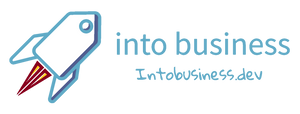A few weeks ago, I found myself in a conference room talking in front of a whiteboard for the first time in a few years.
I was a bit rusty - and I suspect many people are in the same boat. So I went back to my old notes to refresh my memory on best practices around a whiteboarding session. This seemed like something a lot of people might struggle with right now, so I thought I’d share a few of my favorite tips.
It’s about them, not about you
Whiteboarding exercises are traps, just like presentations are traps. And the trap is that most people will spend all their time talking about themselves and their product, rather than the customer and their problem.
When you’re whiteboarding, it’s easier to fall into this trap than in a presentation, because with a presentation you can prepare for a customer-focused conversation by including slides to trigger you to ask questions to your customer and talk about them.
My brain hack to avoid this is to start EVERY whiteboarding session with a question to the audience about the current state. Then I draw what they describe on the board (or better yet, ask one of them to do it). That way, even if I forget later, at least I started the session focused on them. By the end, instead of the conversation being focused on me and my product, it’s focused on us and how my product can solve the customer’s problem.
Bring your own pens
Okay, so this is a super tactical tip, but my most recent whiteboarding experience was frustrating because almost all the pens were dead.
Because of that, I couldn’t color code anything. And the pen that was working had lower contrast than I wanted (Yellow) and a thinner tip than I would like. Luckily, the room was small, but in a larger conference room it would have been tough.
I worked at a company once that actually had branded whiteboard pens and the plan was to take new pens to each meeting and leave them behind, so you were leaving something with your name on it in each conference room.
Maybe you don’t need to go that far, but always have a black whiteboard pen in your bag, just in case.
Snap a picture before you grab the eraser
Whiteboards are ephemeral. This is great for having a conversation, but the danger is that you erase something that’s important.
So to start, I use the entire board before I erase, even if it means I redraw some of the same things. Then, when the board is full and I have to erase something, I will snap a photo (or photos) of the board and then I’ll erase the least important items - usually, they’re things I drew rather than something the customer drew (or had me draw).
I would rather erase my bits 3-4 times than erase something the customer wrote (unless it’s for dramatic effect).
Not only do the pictures give me notes I can use to plan follow-up conversations with them, but they give me a follow-up I can use immediately. Either later that day, or sometime the next day, the photos give you a perfect reason to email them with the photos and reminding them of your call to action.
Talk to the audience, not to the board
If you are facing the board, you should not be talking. If you are among the few that can face the audience and draw at the same time, great. But if you aren’t… stop talking while you draw.
Let me repeat that - DO NOT TALK WHILE FACING THE WHITEBOARD.
Hopefully, you have another co-worker in the room to fill the dead air. This is where a four-legged sales call can be an enormous advantage. But if you don’t, get used to pausing every 15-30 seconds to speak to the room. If you don’t know what to say, describe what you just wrote - unless you’re an artist, it won’t be immediately obvious.
Did I mention you should not talk while facing the whiteboard?
Really. Just don’t.
Did you like this post? Do me a favor and use the links below to share on social media, and subscribe to my newsletter for weekly content drops. When you join my newsletter, you'll also get a link to download my free eBook "Stories Become Sales - How To Turn Simple Stories Into Million Dollar Sales".


Join the conversation